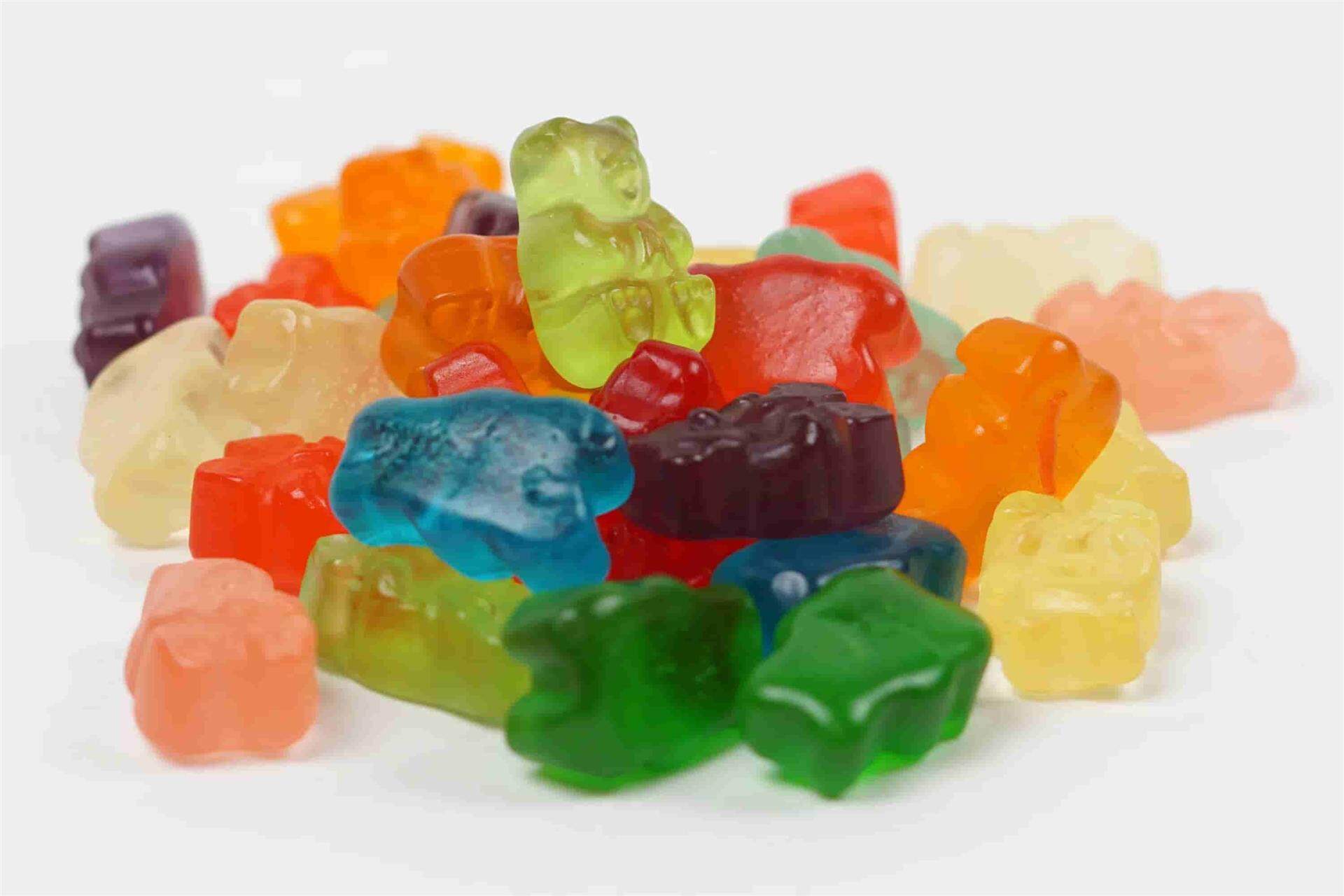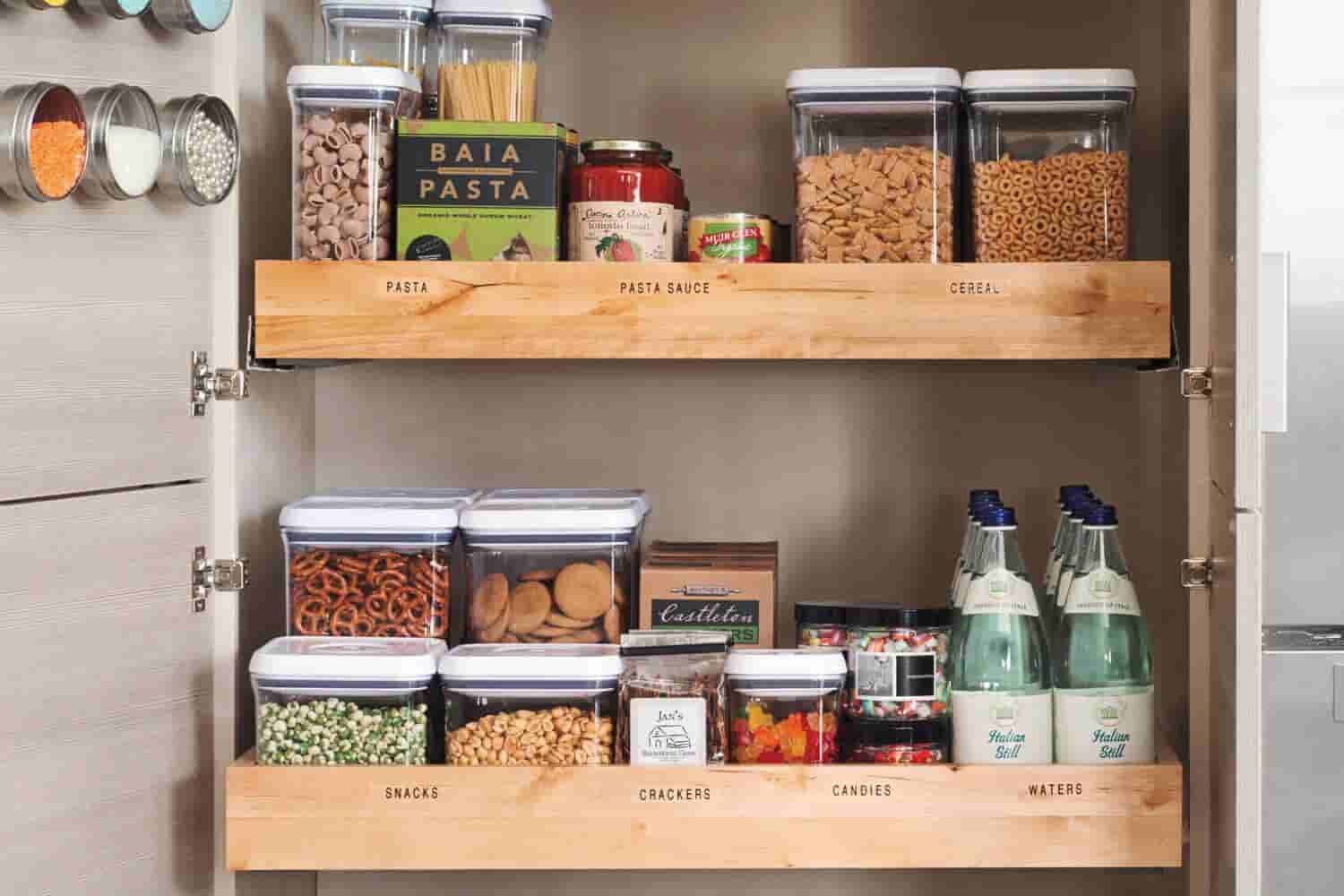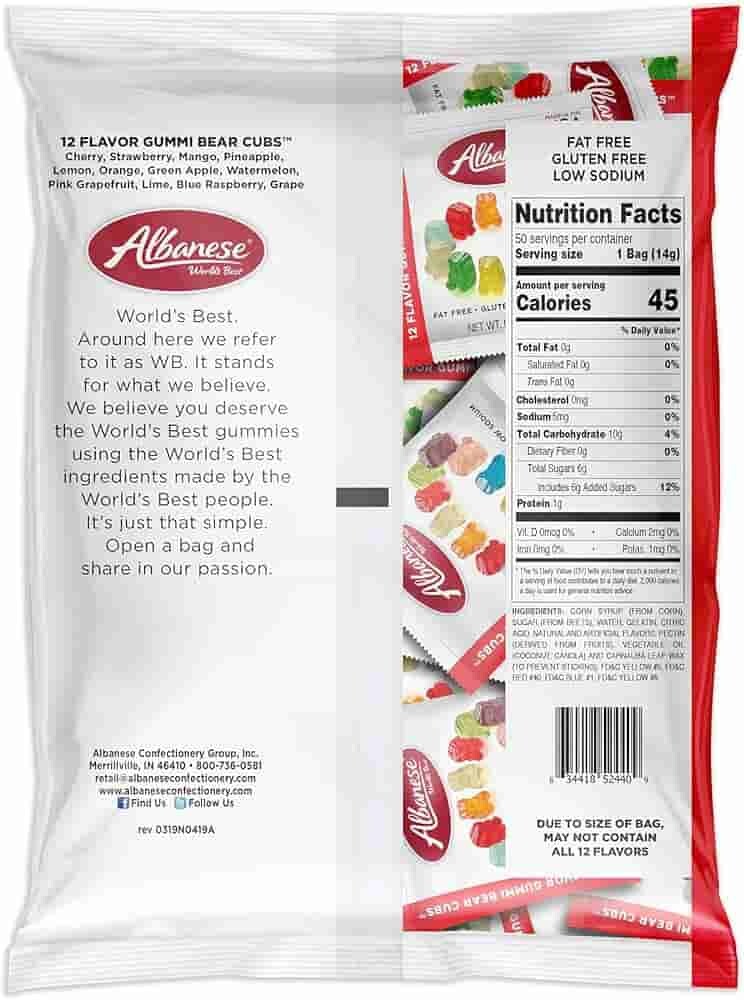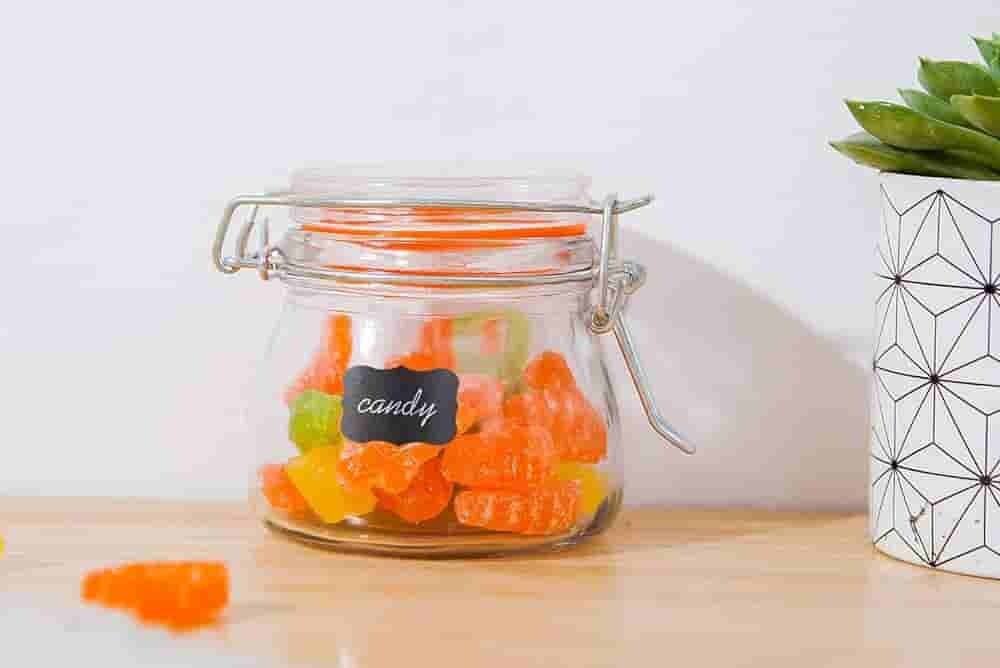How to Stop Your Gummies from Sticking Together
Whether you're making gummy bears in your kitchen for fun or running a small-sized candy business, gummies getting sticky is always a frustrating problem to deal with.

What are the "bad" parts of sticky gummies? They can become a clumpy mess that is unappealing, unpleasant to eat, and difficult to consume. The worst part is that the shelf life may get shorter and be more susceptible to spoilage. You eventually have to throw them out as they are no longer safe to consume.
So, what can you do to keep gummies fresh and savory? In this article, we will share a few best practices that actually work for you. Looking to prevent your gummy bears from clumping and sticking right away? Just keep scrolling!
What Makes Your Gummies Stick Together
Sticking is one of the common issues of gummies. No matter what kind of gummy it is, homemade or commercial, this problem has bothered quite a lot of people who have a sweet tooth.
When gummies become overly sticky, they may leave a gooey residue on your fingers or get stuck in your braces. Especially for gummy vitamins, if these gummies adhere to each other or the packaging, the sticky mess can't ensure the correct serving size for your daily supplement intake.
To solve the problem, we need to start with WHY first. Here are some possible reasons for your gummies sticking together.
1. Unbalanced Recipe

Whatever gummy formulations you use, balancing the ingredients is essential. Gummies are typically formulated with a range of ingredients, including gelatin, water, sugar, glucose syrup, coloring, and flavors.
An article posted on "LIVESTRONG" states that savoring 17-18 gummy bears equals eating 5.25-5.5 teaspoons of sugar at a time. Why is there so much sugar added? That's because sugar and glucose syrup can make your gummies sweet and chewy.
However, more is not always better. Sugar loves water. It draws moisture from the air, forming a sticky layer on your gummies. That is to say, an overly high content of sweeteners within your recipe brings you sticky gummies. So, the ratio of sugar and glucose syrup to other ingredients is vital when making gummies.
2. Too Much Water

As mentioned earlier, sweeteners in gummy formulations can pull moisture from the surrounding air. That is to say, there should not be too much water added to your recipe. To make gummy bears with standard firmness, the ratio of gelatin to water is usually 1 tablespoon to 100 ml.
There is an important indicator that should be kept in mind - water activity level. This indicator is a measurement of water content within your gummies. The value should be controlled to range from 0.50 to 0.75 aw. The water activity level also relates to microbial growth. A higher water activity level can lead to a shorter shelf life of gummies.
The water activity can be measured using a water activity meter. Yet, it may not be necessary for home use. As the meter doesn't come cheap, it's more suitable for those considering producing commercial gummies. If you're making gummies for personal use, just follow established recipes and practice more.
3. Improper Storage

On top of that, there are external reasons for the gummy sticking issue. One of them is how you store gummies. Here, store-bought gummies and homemade ones differ a little bit. When stored properly, store-bought gummies have a shelf life of around 6-12 months, while homemade gummies only stay fresh for 2-3 weeks.
What is improper storage of gummies? Below are some examples.
High temperature. If your kitchen pantry is near the oven or stove, it won't be a good place to store your gummies. When you cook, the temperature around the pantry will get higher, causing gummies to melt and become sticky.
Exposure to moisture. When exposed to a humid environment, gummies tend to clump and become slimy to the touch. The excess moisture can change the texture and taste of your gummies and even speed up the spoilage of the candies.
Direct sunlight. The colorings and flavorings used in gummies are sensitive to light, especially UV light. Exposure to sunlight may cause changes in colors and flavors. Additionally, it can result in your gummies becoming soft and sticky.
4. Poor Packaging

Packaging is responsible for keeping your gummies fresh and tasty. If your gummies go sticky even though your recipe is balanced and your gummies are properly stored, check up on the gummy packaging.
Using packaging that is not airtight or well-sealed can lead to exposure to moisture, air, and contamination. All these will contribute to gummy sticking issues. What's more, you will end up with spoiled gummies that are unsafe to consume.
Top 6 Tips on How to Keep Gummies from Sticking
Now that you know why your gummies become sticky, here are a few useful tips and tricks that will help you address the issue.
1. Stick to balanced gummy formulations.

Too much sugar or water can lead to the stickiness of gummy bears. If you haven't started yet, adding a proper amount of sweeteners or moisture to your recipe can prevent your gummies from clumping in the first place.
If you're now frustrated with this issue, consider reducing the sugar or water content used in the gummy slurry. Adjust the content to the right amount while ensuring a good flavor and texture.
You can also try out some popular sugar alternatives, such as erythritol and stevia. These sweeteners are less hygroscopic compared to sucrose. To address excess moisture, you can add more gelatin to absorb water. These methods may help reduce the chance of gummy sticking.
2. Store gummies properly.

Storage conditions determine if you can end up with delicious gummy candies. These conditions include temperature, humidity, and light. Exposure to heat, moisture, and UV light can soften the gummy texture. This causes gummies to look unappealing, taste awful, and stale.
To prevent gummies from losing shape and sticking together, you'd better not store them in places exposed to these factors. You can keep homemade gummies in a kitchen cupboard or pantry. But bear in mind that these spots must be far away from heat sources. Do not leave store-bought gummies in your car or next to a window. Additionally, keep them away from a humid environment. In a nutshell, a cool, dry location without direct sunlight is ideal for storing your gummies.
For commercial gummies, gummy storage during delivery is also very important. Shipping with temperature-controlled vehicles can keep your gummies cool and fresh all the way from your warehouse to store locations.
3. Put gummies in airtight containers.

Before storing your gummies in a cool, dry spot, make sure they are packaged in a sealed container or bag. The airtight packaging can effectively safeguard your gummies from air and moisture, preserving their texture and taste.
So, what airtight containers are best for storing gummies? Choose those made from food-safe materials. Glass containers with secure lids are a solid choice for preventing gummy candies from air and moisture. For instance, an amber glass jar can provide extra protection from UV light.
We also recommend silicone containers. As with glass jars, these containers are odor-free, heat-resistant, and airtight. These features shield gummies from unwanted exposures that cause them to stick. In addition, ziplock pouches and some PET containers with tight-fitting lids can do the trick.
4. Freeze your gummies.

Typically, the optimal temperature for storing gummy candies falls between 60°F and 75°F (15°C and 24°C). When the storage temperature can't be ensured, using a fridge or a freezer is also a good idea.
This storage method can keep your gummies fresh for much longer by freezing them dry. Usually, homemade gummies can last for 2 or 3 weeks if stored properly. The approach not only stops gummies from sticking but also extends their shelf life for a couple of months. But remember to freeze them in batches so that you don't have to freeze and thaw them repeatedly.
Another amazing part of this method is bringing a brand-new gummy texture. We've tried freezing some gummies in the fridge. The freeze-dried gummies looked a bit strange but tasted surprisingly good. These gummies create a unique and crispy texture while tasting much better. You should try it yourself someday.
5. Coat gummies.
To deal with sticky gummies, getting them coated is another practical solution.
Cornstarch is one of the most common gummy coatings. It's a white powder. Relatively flavorless and odorless, cornstarch can absorb excess moisture on gummies while retaining their original taste and texture. The coating can be added after your gummies have cooled and set.

(Image Source: Bigger Bolder Baking)
We also recommend carnauba wax. This ingredient is a pale-yellow, natural wax derived from the Brazilian carnauba palm. Coating with the carnauba wax imparts a shiny finish to the gummies. The finish acts as a barrier to prevent moisture from entering. Note that the carnauba wax should be heat blended with a flavorless oil to create the coating mixture. Then, gently toss your gummies in the mixture for an anti-sticking coating.

6. Use high-quality gummy manufacturing equipment.
If you're running a confectionery business, using reliable machinery can effectively keep your gummies from sticking together. High-quality gummy manufacturing equipment can precisely control each step of the production process, from preparing, cooking, and depositing to cooling. In the meantime, a well-designed gummy packaging machine ensures your gummy candies are securely sealed in airtight packaging.
At iPharMachine, we offer a complete range of gummy manufacturing solutions. Whether you prefer semi-automatic or fully automatic, our product portfolio can have you covered. Want to learn more about preventing gummies from sticking together with efficient machines? Contact us today!
Final Thoughts
So there you have it! Place your gummies in an airtight container or pouch. Then, store the container or pouch in a cool, dry location. Avoid air, heat, or sunlight exposure. This way, your gummies can be kept from sticking together and stay chewy, fresh, and tasty for longer. Following our tips will bring you an enjoyable gummy-savoring experience. For more gummy-related tips and tricks, explore our other posts. We've got you covered!
- How to Make Gummy Bears Soft Again?
- How to Make Gummy Bears Without Gelatin: Your Fun and Easy Guide
- How to Sugar Coat Gummies: An Informative Guide
- Do Gummy Bears Expire? Chewy Treats and Their Shelf Life
Leave your comment
Also Offers


Containment Automatic Capsule Filling Machine SFK-703

Fully Automatic Dosator Capsule Filling Machine CZ-40

Our Team
As an expert in the pharmaceutical and pharmaceutical packaging industry, iPharMachine has provided solutions for hundreds of pharmaceutical and health product manufacturers for 17 years. By visiting customers, we get good reviews from our customers.
- info@ipharmachine.com
- English Español Deutsche







